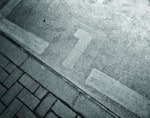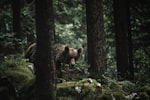This is the picture that defines this playoff series for the Leafs, perhaps even the Leafs’ whole season.
Tyler Bozak has just scored the overtime goal in Game Three and Nazem Kadri is jumping up and down in joy after making the shot Bozak tipped. Bearing down on them to celebrate is Morgan Rielly.
We’ve used this at least twice at PPP on stories. Nazem Kadri posted it to his instagram with the caption “42 43 44”. And before Game Four, Ron MacLean showed the image and mentioned the photographer, Claus Andersen by name.
No one is better suited to have taken that picture, the one up above and many, many more we and others have used to bring life to our words about this playoff series.
Andersen is based in London, Ontario, the hometown of Kadri. And like Kadri’s family, like a lot of Londoners, he wasn’t born there. He was born in Denmark, like the Leafs’ own Frederik Andersen, and his family moved to Canada when he was young. He went to school at Fanshawe College in London, long before Kadri was born, before Kadri’s parents ever came to this country.
Andersen had an interest in sports from the beginning of his career (from the above link):
While in college, I started shooting track and field events at Western University and submitted black-and-white photos to a magazine called “Sport London” (long since gone). It was a good start as I spent late hours in the darkroom printing images that I had photographed at various sports events and then I raced the prints to the magazine on deadline night. I usually got there at 2:00 AM.
He has had a long and distinguished career:
I’ve been to 10 Olympic Games and 14 World Track and Field Championships. Next year [2015], in Beijing, will be my 15th World Track Championship. I’ve done every one since they started in 1983 in Helsinki, Finland.
My first Olympics was supposed to be Moscow 1980 but at the last minute, Canada and a few other countries, boycotted the Games. It was a major disappointment as everything was set to go. At the time, I thought I would never get another chance to go to the Olympics.
And he talks about the changes he’s seen in the industry:
In the old days, a photographer might have just one (original) frame of a great image to send to one client at a time, so immediately it was worth more. But today, with digital photography, you’ve got unlimited perfect copies of an image to send to numerous clients. There’s no more scarcity. Plus, the overall huge supply of images available today has lowered the value of a great image since there are so many other great images out there, (not a day goes by when I don’t look at work of others and say, “wow, I wish I had shot that”).
It’s tough to say that getting into sports photography would be a great move. You really have to love it. For me, this has always been the case.
The digital revolution has changed everything about the media business, and while it means the photographer’s job has changed, it also means that we all get a greater chance to see these wonderful images.
Thank you, Claus Andersen for bringing these games to us in a unique way.



